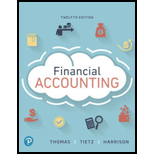
Comprehensive Financial Statement Analysis Project
The objective of this exercise is to develop your ability to perform a comprehensive analysis on a set of financial statements. Obtain a copy of the 2016 annual report (Form 10-K) of Kohl’s Corporation (year ended January 28, 2017) from www.sec.gov. (Use “Kohl’s” in the company search box.)
Requirement 1: Compile basic information (provide sources for your answers)
a. Using a site such as Yahoo! Finance or Hoover’s Inc., research the discount variety store industry. List two competitors of Kohl’s Corporation.
b. Describe Kohl’s business and risk factors.
c. List three Kohl’s brands.
d. At January 28, 2017, what is Kohl’s largest asset? Largest liability?
e. At January 28, 2017, how many shares of common stock are authorized? Issued? Outstanding?
f. Did Kohl’s repurchase any shares of common stock during its fiscal year ended January 28, 2017?
g. When does Kohl’s record revenue?
h. What inventory method does Kohl’s use?
i. Does Kohl’s have any business interests in foreign countries? Explain your answer.
Requirement 2: Evaluate profitability
a. Using information you have learned in the text and elsewhere, evaluate Kohl’s profitability for 2016 compared with 2015. (Remember that the 2016 year-end is January 28, 2017.) In your analysis, you should calculate the following ratios and then comment on what those ratios indicate. Note: You will have to look up the 10-K for 2015 to obtain total assets and stockholders’ equity for 2014. See www.sec.gov.
a.
b. Asset turnover
c. Return on assets (DuPont model)
d. Leverage ratio
e. Return on equity (DuPont model)
f. Gross margin percentage
g. Earnings per share (show computation)
Requirement 3: Evaluate turnover
Evaluate Kohl’s ability to sell inventory and pay debts during 2016 and 2015. Please note that the company does not hold traditional
a. Inventory turnover and days’ inventory outstanding (DIO)
b. Accounts payable turnover and days’ payable outstanding (DPO)
c. Cash conversion cycle (DIO-DPO)
d.
e. Quick (acid-test) ratio
f. Debt ratio
g. Times interest earned
Requirement 4: Perform other financial analysis
a. Calculate common-size percentages for sales, gross profit, operating income, and net income for 2013-2016. Comment on your results.
b. Find the selected financial data in the 10-K where Kohl’s reports selected information since 2013. Calculate trend percentages. using 2013 as the base year. for total revenues and net earnings. Comment on your results.
Requirement 5: Evaluate Kohl’s Corporation stock as an investment
a. What was the closing market price of Kohl’s Corporation stock on January 30, 2017, the next trading day after the balance-sheet date of January 28, 2017?
b. Calculate the price-earnings ratio using your EPS calculation and the market price you just determined.
Want to see the full answer?
Check out a sample textbook solution
Chapter 12 Solutions
Financial Accounting, Student Value Edition (12th Edition)
- Financial Accountingarrow_forwardSolve this general accounting problem?arrow_forwardThe owner's equity at the beginning of the period for Vivo Enterprises was $52,000. At the end of the period, assets totaled $110,000, and liabilities were $28,000. If the owner made an additional investment of $12,000 and withdrew $9,000 during the period, what is the net income or (net loss) for the period?arrow_forward
- What is the amount of the conversion costs?arrow_forwardSuppose the following two independent investment opportunities are available to Fitz, Inc. The appropriate discount rate is 12%. Year Project Gamma Project Theta 0 -$2,500 -$4,100 1 1,300 800 2 1,100 2,100 3 900 3,600 Calculate the profitability index (PI) for each project. Which project should the company accept based on the PI rule? Consider the following cash flows on two mutually exclusive projects for a company. Both projects require an annual return of 15%. Year Project A Project B 0 -$725,500 -$1,450,900 1 275,000 889,000 2 413,800 647,330 3 382,075 554,280 As a financial analyst for the company, you are asked the following questions: If your decision rule is to accept the project with the higher IRR, which project should you choose? Because you are fully aware of the scale problem associated with IRR rule, you calculate the incremental IRR for the cash flows. Based on your…arrow_forwardNeed helparrow_forward
 Financial Reporting, Financial Statement Analysis...FinanceISBN:9781285190907Author:James M. Wahlen, Stephen P. Baginski, Mark BradshawPublisher:Cengage LearningCentury 21 Accounting Multicolumn JournalAccountingISBN:9781337679503Author:GilbertsonPublisher:Cengage
Financial Reporting, Financial Statement Analysis...FinanceISBN:9781285190907Author:James M. Wahlen, Stephen P. Baginski, Mark BradshawPublisher:Cengage LearningCentury 21 Accounting Multicolumn JournalAccountingISBN:9781337679503Author:GilbertsonPublisher:Cengage- Principles of Accounting Volume 2AccountingISBN:9781947172609Author:OpenStaxPublisher:OpenStax College
 Financial Accounting: The Impact on Decision Make...AccountingISBN:9781305654174Author:Gary A. Porter, Curtis L. NortonPublisher:Cengage Learning
Financial Accounting: The Impact on Decision Make...AccountingISBN:9781305654174Author:Gary A. Porter, Curtis L. NortonPublisher:Cengage Learning





